The air and ground crews of 847 Naval Air Squadron are undertaking essential desert training as part of Exercise Emerald Warrior at Naval Air Facility El Centro, California.
According to a news release, the deployment, located about 100 miles east of San Diego, is designed to prepare the squadron’s personnel and their AH1 Wildcat helicopters for operations in extreme environments.
This follows the squadron’s recent arctic training in Norway, demonstrating their ability to operate in both cold and hot climates.
847 NAS, based at RNAS Yeovilton in Somerset, provides vital support to the Royal Marines with its Wildcats, including reconnaissance, top cover, artillery spotting, and transport of troops and personnel.
During this exercise, the squadron is refining its air-to-air combat and air-to-ground operations in challenging desert conditions. According to Lieutenant James Parker, a pilot with the squadron quoted in the news release, “Operating in the desert environment is crucial for Commando Helicopter Force aviators,” as it prepares them for the harsh conditions they may encounter during real-world missions.
In addition to flying, the deployment also involves survival training for all personnel, with a focus on handling extreme temperatures, maintaining hydration, and navigating the risks posed by local wildlife such as scorpions and snakes. This training is designed to mirror the Arctic survival training the squadron undergoes in Norway.
Personnel have been learning to adapt to the desert environment, including practising techniques for sourcing food in remote locations. “Operating in the 48-degree (118°F) heat of the Sonoran Desert requires hard work and mental resilience from all involved,” said Lt Parker.
The squadron will remain at El Centro for several more weeks as they continue to build their skills in desert operations, further ensuring their readiness to support ground forces in a variety of environments.
The Wildcat helicopter
Replacing the older Lynx MK8, the Wildcat is equipped with more powerful engines, allowing it to perform in extreme weather conditions, making it a highly capable asset in both arctic and desert environments. The helicopter can fulfil a wide range of roles, including anti-surface warfare, force protection, and counter-piracy operations. In addition, the Wildcat is equipped to take on an anti-submarine role, further enhancing its versatility in maritime operations.
The Wildcat features advanced technology, including a digital glass cockpit with four multi-function displays that improve situational awareness and communications. It is also equipped with a nose-mounted MX-15 Wescam Electro Optical Device (EOD), which allows the helicopter to detect targets at long ranges, day or night, and in adverse weather conditions.
The Wildcat’s firepower includes Sting Ray torpedoes, a 12.7mm M3M machine gun, and Martlet and Sea Venom missiles, making it a valuable asset for a variety of missions. Its flexibility also extends to maritime lift tasks, search and rescue, and humanitarian operations, providing critical support in diverse scenarios.


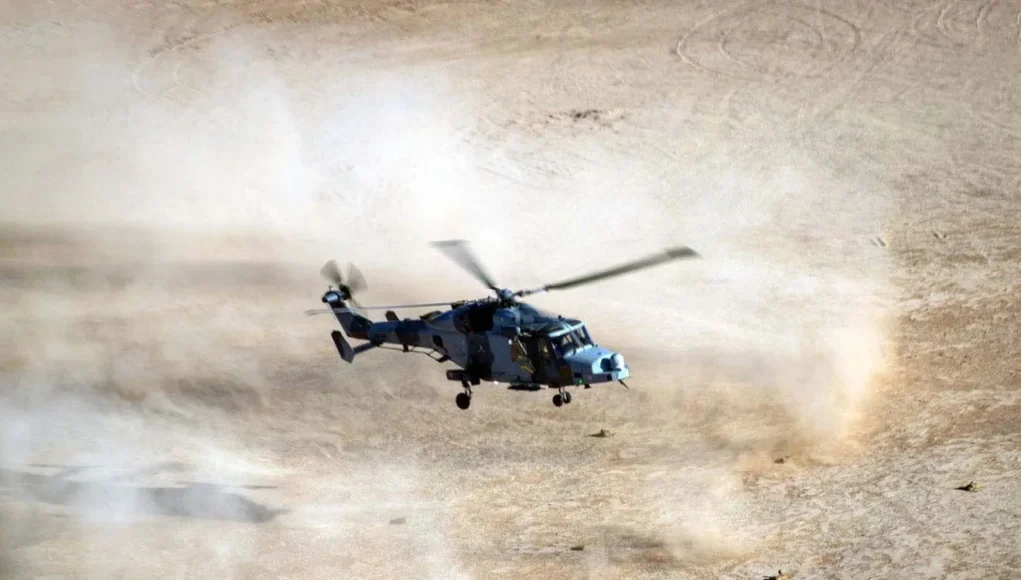
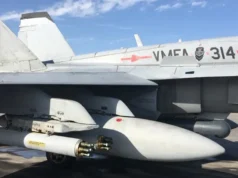

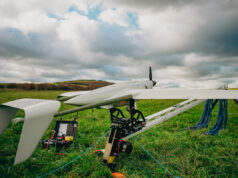
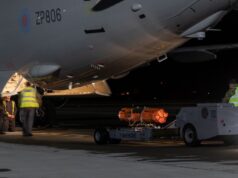

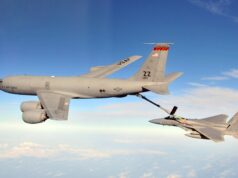
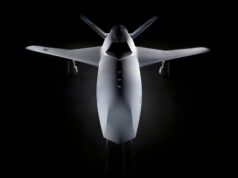

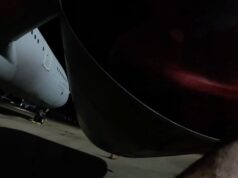
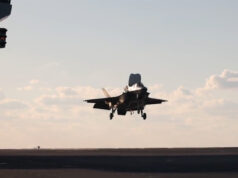

“Replacing the older Lynx MK8″
Barely, with only 34 purchased. I believe these Wildcat are actually Army owned aircraft, part of 1 Regiment AAC, but have FAA markings for use by 847. I’d read all the Regiments assets are pooled so no one Sqn has its “own” aircraft.
No radar in the picture, probably no data link either. Disappointing. Navy Wildcats (HMA2) have radars. Army Wildcats (AH1) are supposed to be getting them. Why 847 NAS uses AAC AH1s is beyond me, also why it will take years to upgrade them.
Evening mate….
“reconnaissance, top cover, artillery spotting, and transport of troops and personnel.”
Err, do they borrow other helicopters to do the above, the Wildcat AH1 is critically weak in all these areas…
In a proper ‘shooting war’ you wouldn’t let an Army Wildcat anywhere near the front line, unless you needed raw materials for the razar blade factory….
Hi Jon. To your point re “reconnaissance, and, artillery spotting, Is that not the role of the Watchkeeper UAV?
I imagine trooping is their primary role i,e, small specialist teams like a javelin missile team, or perhaps battlefield casualty evac? So the trooping roles to small for a Chinook.
I had read the Wildcats are used as Recc for the Apache force! Even saw a mini doc about them operating in tandem at STANTA once.
I have never managed to get an understanding of the role of the AAC Wildcats for SF and RM. We are supposed to be upgrading them, but even after they have a radar and a datalink, and even if Martlet or even Sea Venom is deployed to suplement the 50 cal machine guns, they still won’t be all that good for the stated roles.
Maybe the days of manned recon helicopters is over and the Navy should get the lot.
Beyond “recc for Apache” I’m as in the dark as you.
With so few escorts at present the FAA taking 34 Wildcat, what would they do with them! They are also not HMA2s like the 28 FAA ones, which are able to furnish the Ships Flights and provide for the MCT Flight.
You have a point. I’ve assumed they can be upgraded.
Having a reserve would be no bad thing. Also, the destroyers and the GP frigates can each house two Wildcats in the hangars. If it gets a bit touch and go with iran, I’d like to see as many helicopters in the Gulf as we can get. The Iranian revolutionary guard’s asymmetric tactics are exactly what Wildcats with Martlets and Sea Venom were designed for. Trent and Medway could also profitably use a Wildcat (despite lack of a hangar).
It won’t happen as it would make people ask what should the Army be using instead? Whatever the answer, we can’t afford it.
Thanks DM ,that does kinda makes sense.
Hi DM.
I recall the BAOR in the ’80s using Lynx as a battlefield taxi for rapid deployment of Milan teams. A primary Gazelle role was recce for TOW armed Lynx and arty spotting. I guess these roles are now provided by Watchkeeper ? I saw on this forum that only 13 of these were currently operational -which is a worry.
Afternoon Chris.
There were 3 AAC Regiments in BAOR I recall. Each of 3 Sqns, I forget the Lynx/Gazelle mix of the three.
Yes, Lynx had the TOW, alongside Gazelle.
I don’t recall the Lynx used for Milan teams but I do recall the Puma and Chinook Sqns of RAF Germany being used to move 24 Airmobile Brigade on exercise with its huge number of Milan FPs. They were to be put down in front of any armoured breakthrough by GSFG or the following echelon in the Soviet WMD.
Graham and I have talked of this, as I recall Graham was involved with 24 Bde, so he will be able to flesh out more and amend any errors.
On Watchkeeper, I understand there have been difficulties in training pilots for many years, so much so they moved the training at one point to Ascension and then Cyprus. Over a billion spent, most in storage, and with no actual weapons carrying ability alongside its ISTAR role.
There are 4 Batteries in 47RA, alongside its HQ Battery and REME LAD.
I too had read of only minimal numbers operational, I do not know the split between Batteries if only 13 are in use.
We also have the other UAV alongside the TUAS Watchkeeper. Desert Hawk III replaced by Puma AE/LE being replaced by Indago 4 and Stalker VXE30.
I would not want to be in a helicopter attempting to “spot” for the RA in this day and age. Like John ( Wildcat is one of his fav subjects ) I see Wildcat a bit of a “jobs for the boys” exercise given its cost and the low numbers bought replacing much greater Lynx numbers. Even the AH7 Lynx of 657 AAC for SF support got cut. Some of the paltry 34 Wildcat AH1 were planned to be converted for the SF support role, so small teams as you say, but it never happened.
Thanks Daniele- that’s an interesting read, cheers for that, I think your point on the 3 ACC regts is spot on. I recall one was assigned to each of the the three armoured divisions in the BAOR. The watchkeeper situation is a real concern hopefully this will be addressed.
As for arty spotting in a helo – thanks but no thanks! Slightly off point, the SADF made extensive use of the Seeker UAV (probably acquired from Israel) during the big battles in South East Angola, Aug 87 to Mar 88. These undertook arty spotting and real time recce, very effectively.
I’m pretty sure this operational doctrine came straight from the Israelis experience using theses in the Beka valley, back in 82.
847 certainly gets about and it’s good to witness their versatility. I hope the recent change to the role of the RM ensures the future of the commando and all of its support organisations. Give then the means and the RM will get the job done.
I think the contrary is evident. If the RM are now small raiding teams do they need a RA Regiment and a RE Regiment that are much needed by the army? 148 Battery I get, given their niche specialised roles.
I’d love to learn from a reliable RM source just what role these units play now we no longer have a deployable 3 Cdo Bde and how Light Guns support a RM raiding team with few ship to shore connectors.
847 Wildcat themselves are barely armed so hardly capable aviation support if airborne firepower is required.